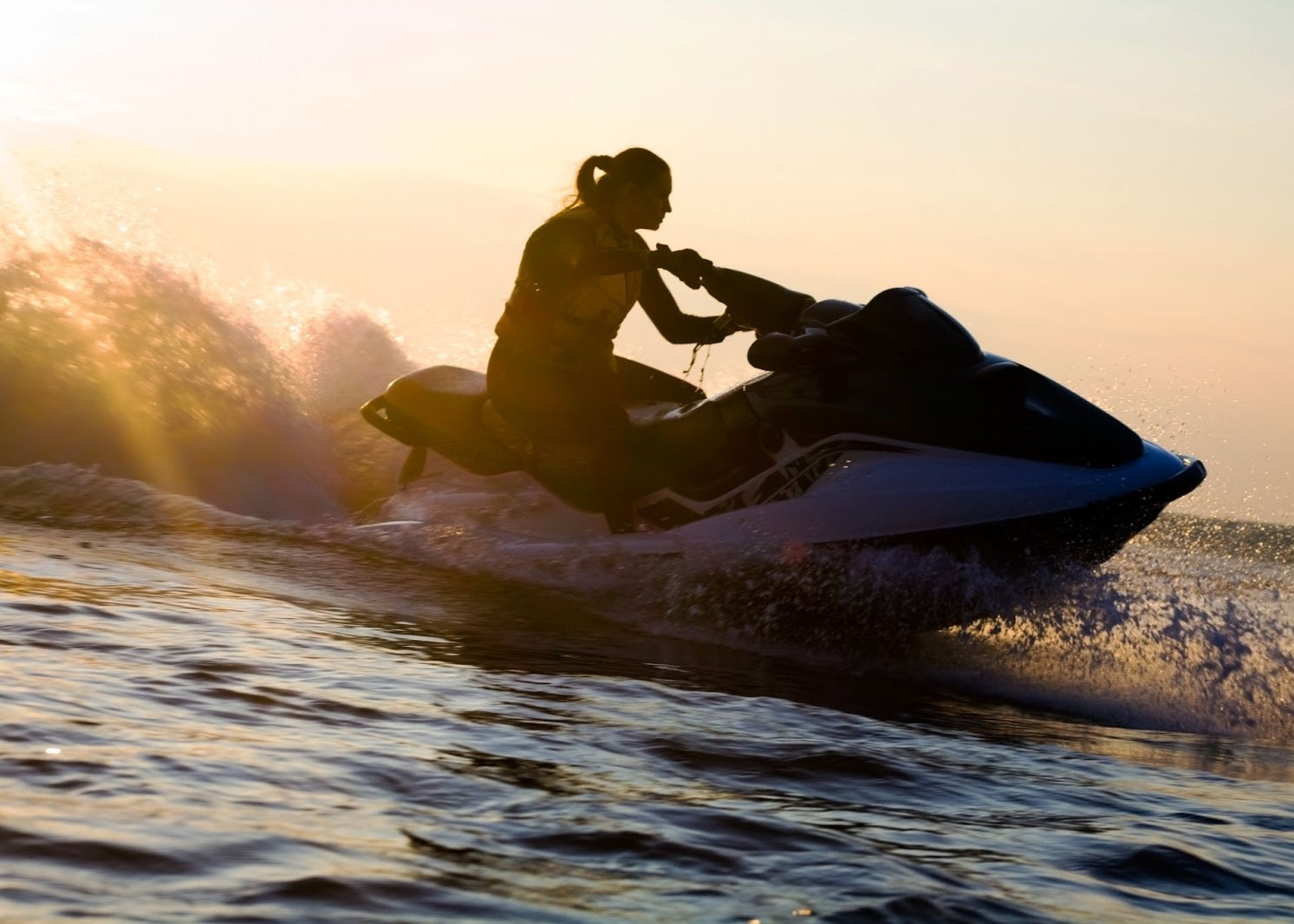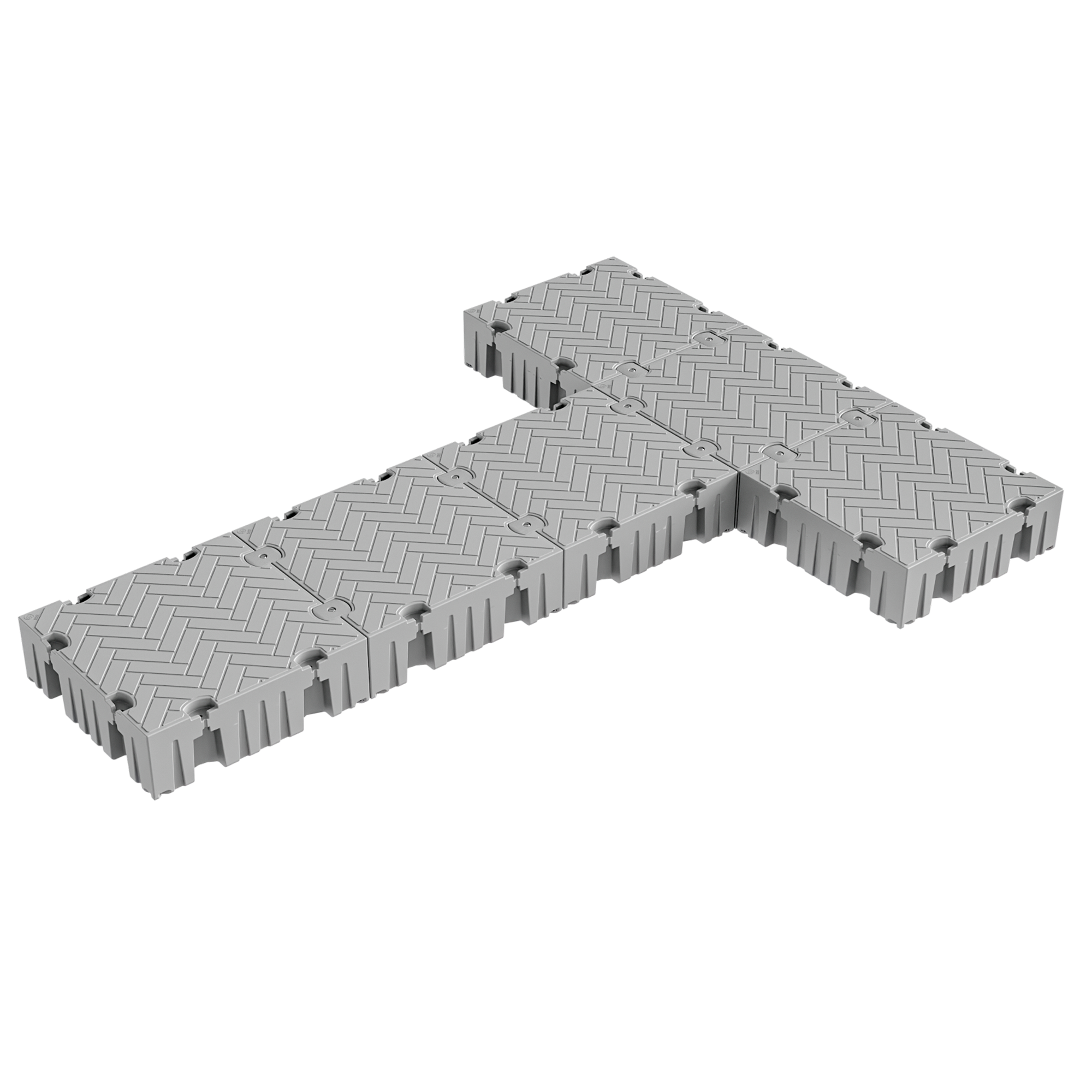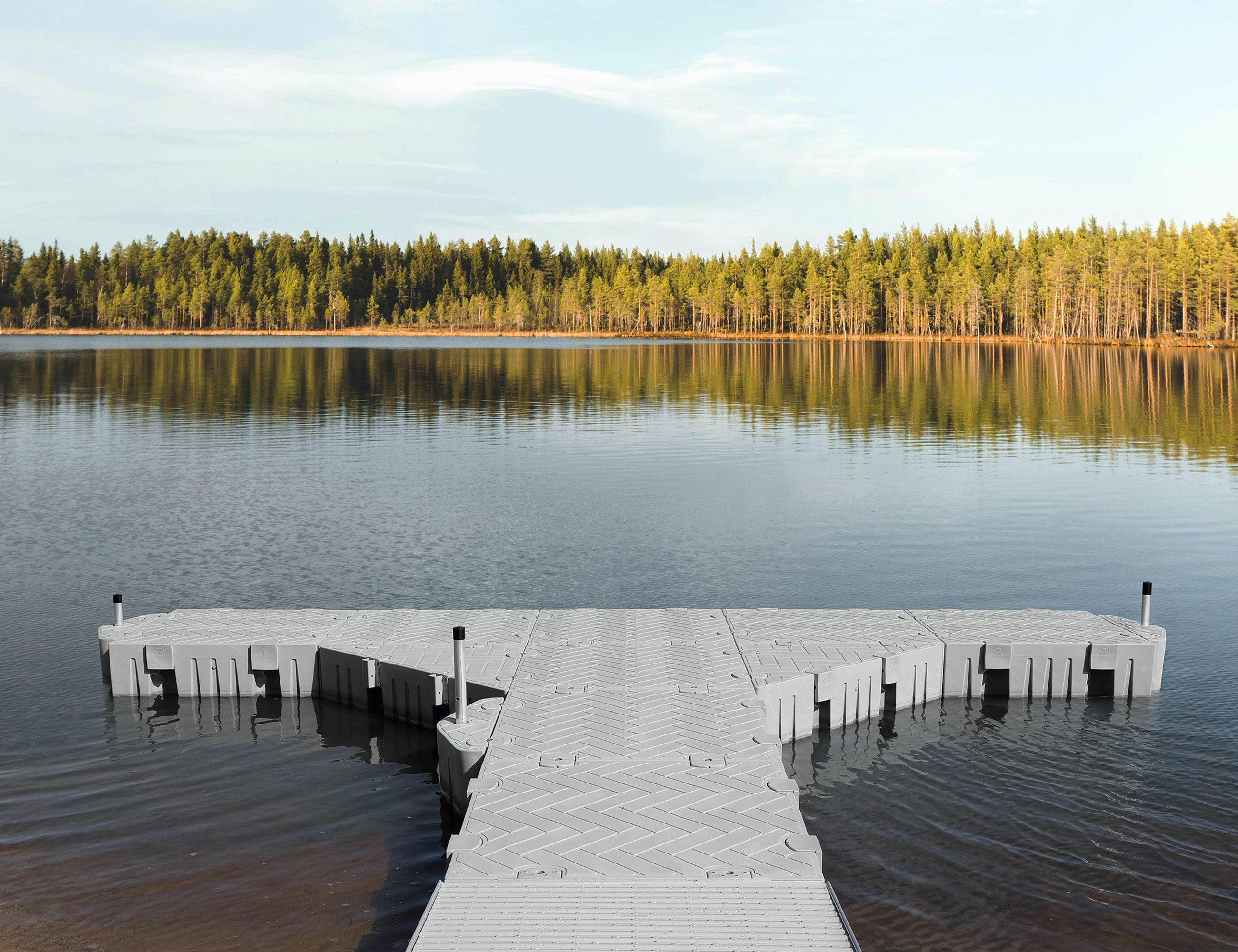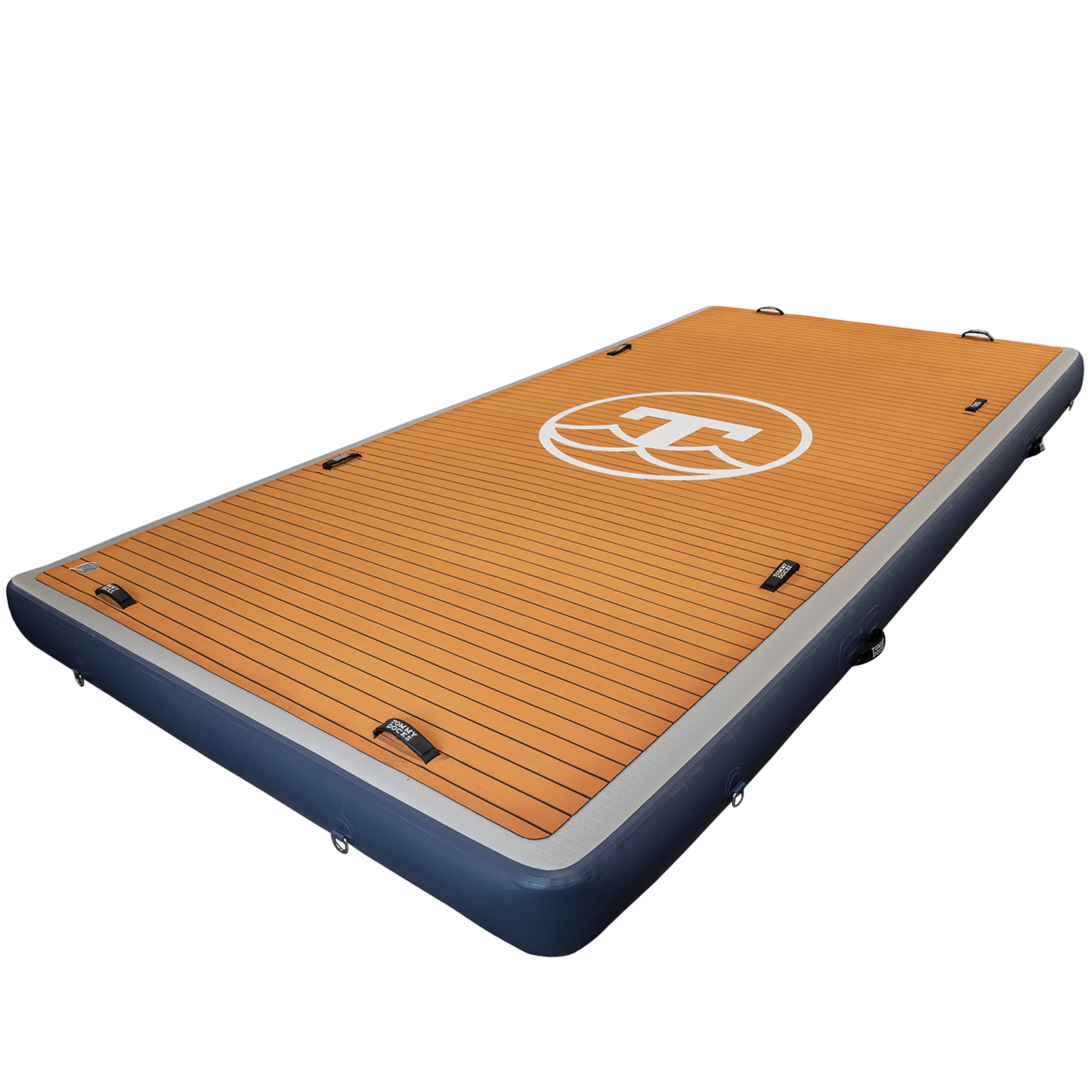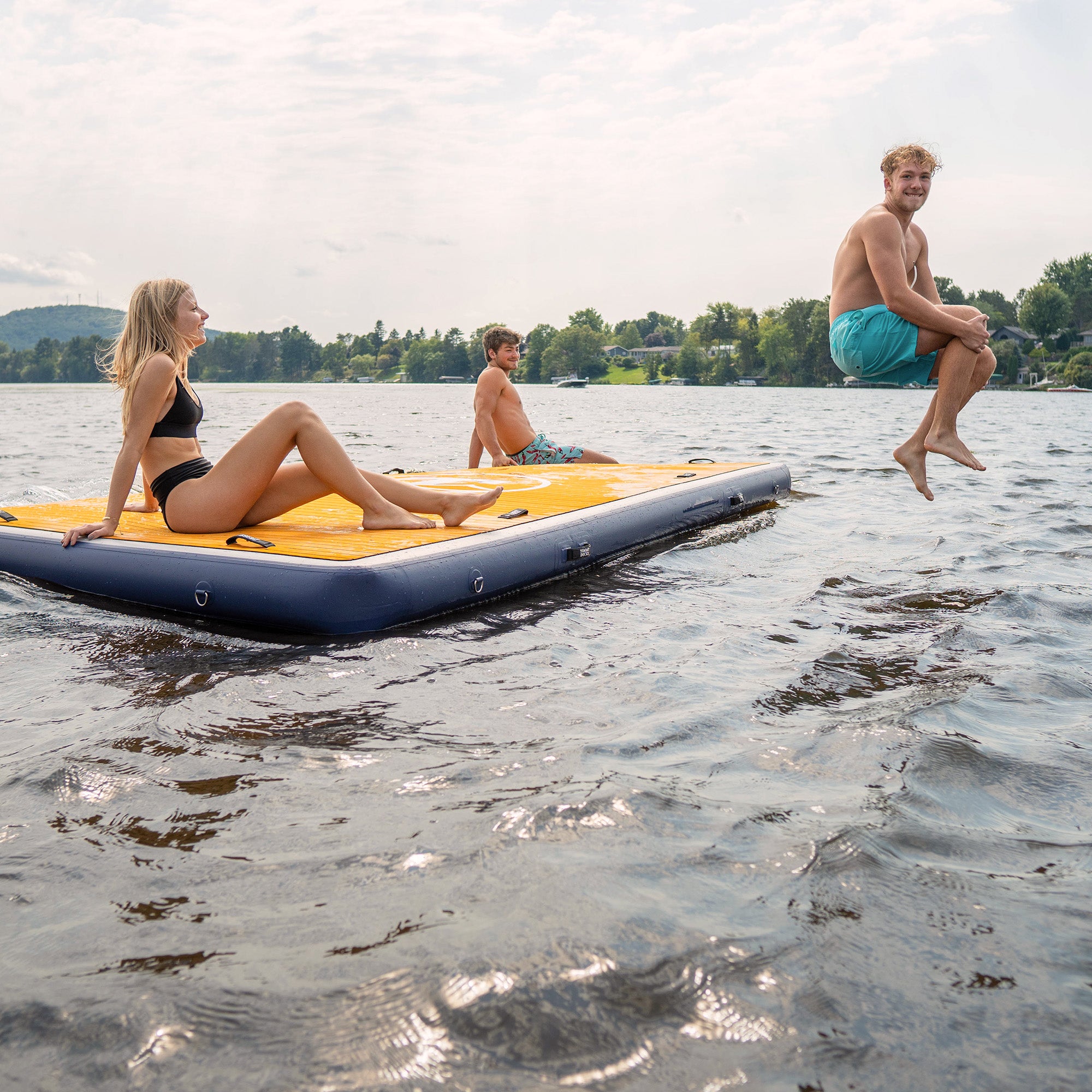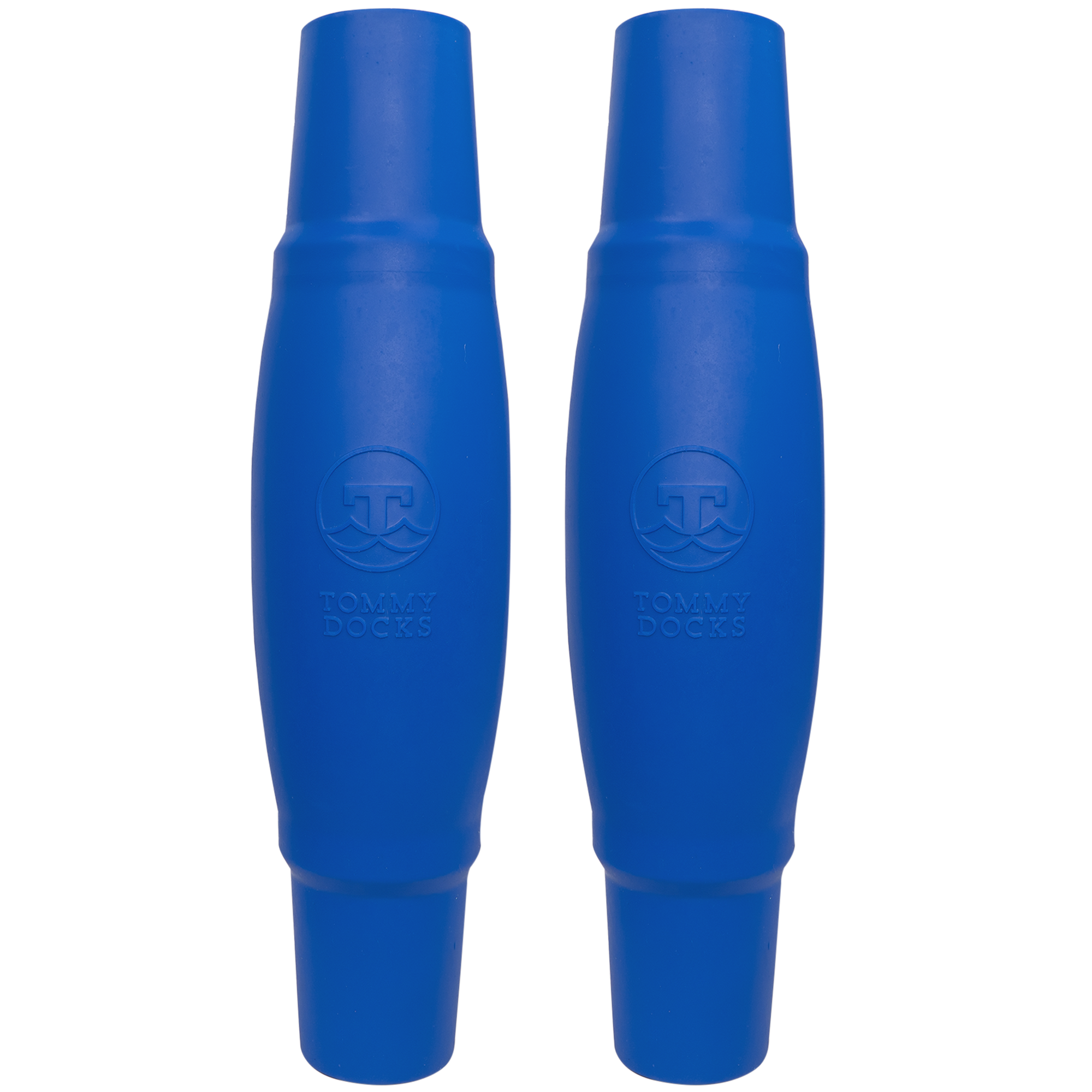A personal watercraft (PWC) is a fast, compact vessel you ride like a motorcycle on the water that steers with handlebars and is powered by a jet pump instead of a propeller. Jet Skis, WaveRunners, and Sea-Doos are all PWCs. The Jet Ski brand has become shorthand for this whole category.
In this blog, we’ll break down the different types of PWCs, what to know before buying, and how to set up your dock for easier storage and more time on the water.
What is a Personal Watercraft?
A personal watercraft (also called a PWC, jet ski, or similar device) is a small, fast recreational vessel that uses a water jet pump, not a propeller, to move through the water. That means you’re riding something powered by an internal combustion engine that pulls in water from underneath, pressurizes it, and blasts it out the back for thrust.
You steer with handlebars that control the direction of the jet pump, which makes handling a breeze, even for beginners. And according to the United States Coast Guard, PWCs are technically Class A inboard motor vessels, which is just a fancy way of saying they’re considered boats, and you need to treat them as such when it comes to safety and legality.
Types of PWCs: Which One Fits Your Style?
There are plenty of PWC models out there, so it helps to think about how you’ll actually use yours. Want something for fast rides solo? Or do you picture long, chill afternoons with a passenger and a cooler?
-
Recreational Models
These are your all-arounders. Affordable (starting around $5K), easy to handle, and great for families. Perfect for lake days and evening rides with the kids. -
Performance Models
Built for speed demons; think 65+ mph. Smaller, more agile, and packed with high-horsepower. These are meant for thrill seekers who like high speed and tight turns. -
Luxury Models
Like a Cadillac on the water. These crafts are stable, spacious (usually for 2–3 riders), and often come with features like sound systems, cruise control, and even braking systems. -
Touring Models
Designed for longer rides. More storage, better fuel efficiency, and plush seating. Great for folks who want to explore, not just zoom around the dock. -
Stand-up Models
For those seeking a more athletic experience, stand-up models require the rider to stand and balance. These are often used in competitions and for tow sports like water skiing.
Before You Buy: Things to Think About
Picking the right personal watercraft is more than just grabbing the coolest-looking one off the lot. Here are a few real-world things to consider:
Where You’ll Ride
Calm lakes? Go for something more basic. Choppy ocean waters or shallow water spots? You'll want a sturdier craft that can handle some abuse and maybe resist corrosion from saltwater.
Storage
When summer’s over, that jet ski needs a home. Make sure you’ve got a place to store it that is preferably off the ground and protected from the elements.
Your Skill Level
Not everyone is ready to hop on a performance model right away. If you’re new, start with something beginner-friendly and work your way up.
Budget
It’s not just the price of the vessel. Add in registration numbers, insurance, fuel, and maintenance, plus whatever dock setup you’ll need.
Safety Equipment
The Coast Guard requires that every PWC operator and rider wear a personal flotation device (PFD), such as a life jacket. Some states also require a boating safety course before you can legally ride. Don't forget other gear like whistles, fire extinguishers, and inflatable life jackets if you want something less bulky.
Noise and Wake Rules
Some areas restrict idle speed or limit when and where you can ride, especially around other docks or in wake speed zones. Check your local regulations.
Other Boaters
Always keep a proper lookout for vessel traffic, swimmers, and tow sports users like water skiers. A little common sense goes a long way to avoid a boating accident or property damage.
Setting Up Your Dock for a PWC
Once you’ve picked your personal watercraft, it’s time to think about how to store it. Having the right dock solution means less hassle, more riding, and better protection for your investment.
1. Floating Docks
These sit on top of the water and move with the water level. They’re great for areas with fluctuating levels or where you need something temporary.
Pros:
-
Simple to install and move
-
Perfect for small boats and lightweight PWCs
-
Adjusts with water level
Cons:
-
Not ideal in rough water
-
Can feel a little less stable underfoot
-
Requires upkeep
2. Drive-On Ramps
Also called PWC ports, these let you ride right up onto the dock. Great for daily riders who want to skip the trailer and launch routine.
Pros:
-
Super fast and easy access
-
Keeps your craft dry (less corrosion)
-
Great for reducing marine growth
Cons:
-
Can be tricky to drive onto at first
-
Not ideal for areas with lots of vessel traffic
3. Lift Systems
These use mechanical lifts to raise your jet ski completely out of the water — awesome for long-term storage or if you’re on saltwater or rougher conditions.
Pros:
-
Best protection for your recreational vessel
-
Easier for older riders or those with mobility concerns
-
Helps extend the life of your PWC
Cons:
-
Higher upfront cost
-
Some require power
-
Might need a pro for install
Add-Ons to Maximize Your Dock Setup
If you want your dock to feel more like a private waterpark, here are some extras that make a big difference:
-
Dock Bumpers & Edge Guards – Prevent scratches and dings
-
Lighting – Helps you dock safely after sunset
-
Storage Boxes – Perfect for stashing towels, ropes, and your backup life jacket
-
Jet Rinse Stations – Essential if you ride in saltwater. Rinse that jet pump every time
-
Benches & Seating Areas – Kick back and enjoy the view after your ride
-
Security Locks – Keeps your investment safe
-
Canopies & Shade – Make hanging out more comfortable on hot days
-
Maintenance Routine – Keep a checklist so you don’t forget oil changes or flushes
-
Winterization Plan – Shut everything down properly before the cold sets in
-
Invite Friends – Because everything’s better with a tube, a rope, and a good laugh
Make the Most of Your Waterfront Life with Tommy Docks
When it comes to building a dock setup that works, Tommy Docks has you covered. Our Simple Shore PWC Ramp is a favorite with many owners because it's designed to protect your jet ski, make launching and docking simple, and hold up over time.
-
Supports up to 1,200 pounds
-
Adjustable bunks for different hulls
-
Non-skid surface for safe boarding
-
Built to last — no rust, no rot, no drama
Whether you need a floating dock, drive-on ramp, or stationary dock , our team can help you choose the right option for your water conditions, space, and lifestyle. With DIY-friendly kits and expert support, you'll be ready to enjoy your PWC like a pro — no stress, just good times.
Ready to ride?
Check out the Simple Shore PWC Ramp or talk to our crew today. Let’s get you out on the water and loving every minute of it.

